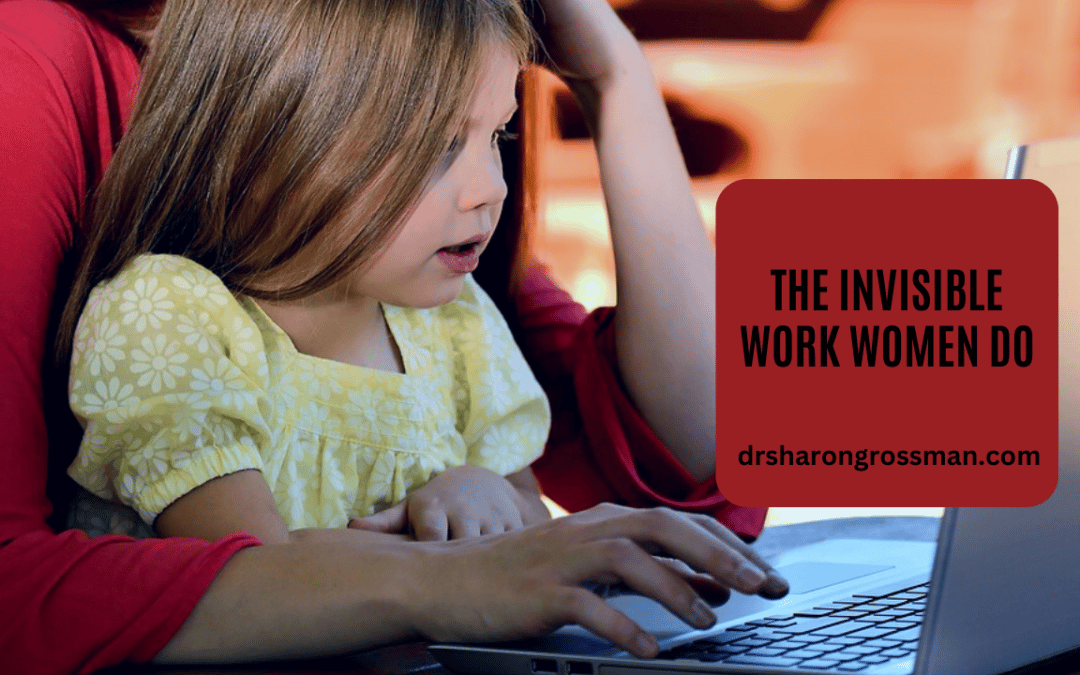Women’s unpaid labor has a monetary value of over $2 trillion.
Women spend more time than men doing unpaid labor, and it’s not just housework. Unpaid labor is any activity that is not compensated with money or another form of payment. This includes taking care of children, the elderly, and the sick; volunteering; and caregiving for people with mental health issues or other problems that affect their ability to function independently.
Unpaid labor is an important part of the economy because it helps families function smoothly and stay healthy—but it also has economic value: if every woman were paid for all her work as a mother, teacher, or nurse (to name just a few careers), our economy would grow by over $2 trillion.
Unfortunately, the invisible work women do is often not recognized as valuable. When women are expected to do most of the housework, for example, it can be difficult for them to advance in their careers or obtain higher wages.
In contrast, men who do more unpaid labor than women tend to have higher incomes and better job opportunities—even if they’re not doing any actual paid work outside the home.
What about if you are playing double duty? When working women do more unpaid labor than men, they’re more likely to have lower incomes and fewer career opportunities. They also tend to be less happy with their lives overall—even if they are employed full-time or work outside the home in addition to doing housework.
Women provide more emotional labor than men.
Emotional labor is the work of managing emotions, often with little or no reward. It’s a term that came about as a result of a study by Arlie Hochschild at UC Berkeley in the 1990s.
Emotional labor can be seen as a form of invisible labor because it isn’t typically recognized within our culture (and often isn’t paid). Because women are seen as caregivers more so than men, there’s an assumption that providing emotional support falls under women’s responsibilities rather than both genders’ responsibilities equally. Studies show that, in fact, women spend more time doing this kind of work than men do.
Hochschild, who studied flight attendants and their interactions with passengers. found that these workers were expected to be empathetic to the needs of others, even when it didn’t benefit them personally. For example, flight attendants had to act happy for passengers even when they weren’t feeling it. They were expected to be available for their passengers’ needs, no matter what.
Hochschild concluded that emotional labor is a form of work that requires one to constantly monitor and manage their feelings in order to meet the expectations of those around them.
The implications of emotional labor are far-reaching. The concept applies to all areas of life where people interact with each other. It can be applied to friendships, families, and work environments.
How to start addressing the problem.
The fact is that women tend to absorb the double shift.
What can we do to significantly even the playing field?
We have to acknowledge the facts and that this puts women at a disadvantage.
The next step would be for all of us—men and women alike—to start talking about it.
We need to talk about the expectations that we have for our female partners and friends. We need to talk about how these expectations are often different from what we expect from men. And, we need to talk about how we can start sharing this work fairly, so that women don’t feel like they have to do it all on their own.
Why do we have different standards for men and for women? Often, it’s because as a society, we assume that women are the ones interested and good at this work. There’s a funny idea that if this work is more intrinsic to women, they shouldn’t get paid or recognized for it.
Perhaps we’ve been conditioned by our culture to expect women to take on more of these responsibilities. Women are, after all, the ones giving birth to babies. Given their maternal instinct, shouldn’t they be the ones raising the children?
We think of women as emotional creatures. When a woman takes a stand on an issue related to injustice or discrimination, she’s more likely to be “applauded for her ‘passion’ but not rewarded for her time, leadership, or DEI acumen,” according to the Harvard Business Review.
We need to fix this inequality by showing women how valuable they really are. This means more than just getting paid equally for the same work. It means being recognized as leaders in the workplace and making sure that they are not being held back by stereotypes that don’t apply to them.
Conclusion
Women are doing a lot more work than we realize, and it’s time to acknowledge that. We need to start recognizing the invisible labor women do and ensure they have access to resources so they can take care of themselves. This could include paid family leave or child care assistance. It also means changing society’s perception of women as caregivers so people don’t expect them to provide this service without compensation—which is not only unfair but also prevents many women from pursuing careers outside the home or starting their own businesses.
The burden of this gender inequality, and specifically when women are undervalued and underpaid, increases their risk for burnout. It’s time we shine a light on women’s contributions and turn the invisible to visible.
—————————-
Do you want to get my Burnout Checklist for free?
I’ve created a checklist to help you identify signs of burnout and steps to take to get immediate results. Curious?
Author



Recent Comments